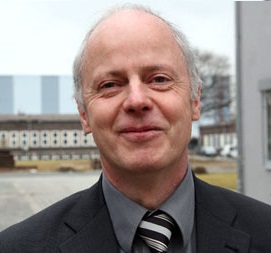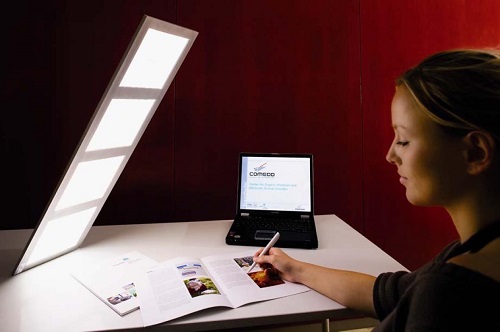“OLED lighting has a bright future” was a common theme at the Solid State Lighting forum 2014 where many manufacturers touted the advantages of OLED technology in comparison with LED. Among the many advocates was Manfred Weigand, Global OLED lighting Marketing Director for Merck. According to Weigand, a future where OLED becomes a true competitor with LED is absolutely obtainable.
 |
|
Manfred Weigand, Global OLED lighting Marketing Director for Merck (photo courtesty of Merck) |
The key to making OLED competitive is through cost reduction. OLED currently costs over 20 times higher than LED. If costs do not drop, OLED will remain as a niche market. Many manufacturers are eager to bump OLED out of its niche market status due to the many advantages this lighting technology has, including flexibility, color tunability, transparency, and light quality.
 |
|
OLED could become common in future lighing fixtures if prices are able to drop. |
One way to cut costs was through coating deposition instead of vapor deposition of underlayers, according to Weigand. Vapor deposition is currently the standard process for OLED display and lighting. This form of stacking however can lead to defects due to infiltration of foreign particles which will reduce quality and yield. Coating however has good wetting and leveling for foreign particles. Yield is therefore higher as there is less waste. Soluble materials are able to reduce cost significantly. “With soluble materials, standard coating and printing technologies become available for larger area mass production of OLED,” said Weigand. Solution processing for OLED lighting is able to lower costs through increased material utilization, higher production speed, reduce initial equipment costs, higher yield, and higher efficiency using several materials in a single later in manufacturing.
OLED has the opportunity to transform the lighting industry. The future market segments where OLED will thrive include hospitality, residential, architectural, and retail shops. According to Weigand, 20 to 30 percent market share is completely within reach. He estimates that OLED will have a breakthrough by 2018. Until then, there is still a lot of room for development as basic technology is not yet available.
(Author: Leah Allen, Editor/Translator, LEDinside)





 CN
TW
EN
CN
TW
EN





